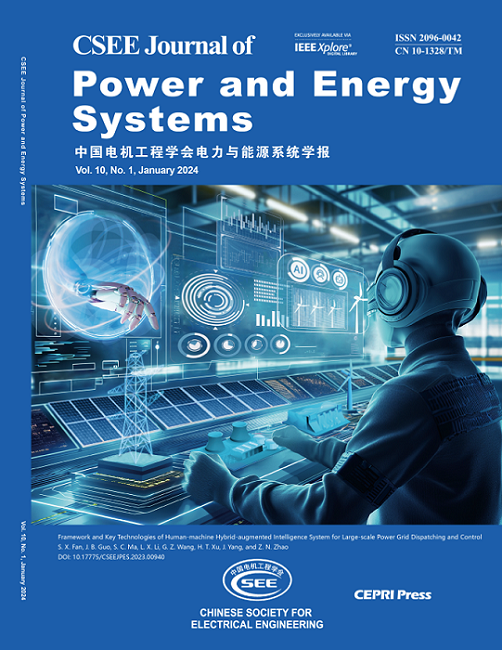Comprehensive Assessment of Transient Stability for Grid-Forming Converters Considering Current Limitations, Inertia and Damping Effects
IF 5.9
2区 工程技术
Q2 ENERGY & FUELS
引用次数: 0
Abstract
This paper presents a quantitative assessment of the transient stability of grid-forming converters, considering current limitations, inertia, and damping effects. The contributions are summarized in two main aspects: First, the analysis delves into transient stability under a general voltage sag scenario for a converter subject to current limitations. When the voltage sag exceeds a critical threshold, transient instability arises, with its severity influenced by the inertia and damping coefficients within the swing equation. Second, a comprehensive evaluation of these inertia and damping effects is conducted using a model-based phase-portrait approach. This method allows for an accurate assessment of critical clearing time (CCT) and critical clearing angle (CCA) across varying inertia and damping coefficients. Leveraging data obtained from the phase portrait, an artificial neural network (ANN) method is presented to model CCT and CCA accurately. This precise estimation of CCT enables the extension of practical operation time under faults compared to conservative assessments based on equal-area criteria (EAC), thereby fully exploiting the system's low-voltage-ride-through (LVRT) and fault-ride-through (FRT) capabilities. The theoretical transient analysis and estimation method proposed in this paper are validated through PSCAD/EMTDC simulations.考虑电流限制、惯性和阻尼效应的成网变流器暂态稳定性综合评估
本文在考虑电流限制、惯性和阻尼效应的情况下,对并网变流器的暂态稳定性进行了定量评估。这些贡献总结在两个主要方面:首先,分析深入研究了受电流限制的变流器在一般电压暂降情况下的暂态稳定性。当电压暂降超过临界阈值时,会产生暂态失稳,其严重程度受摆动方程中的惯性系数和阻尼系数的影响。其次,使用基于模型的相位画像方法对这些惯性和阻尼效应进行了综合评估。该方法允许在不同惯性和阻尼系数下准确评估临界清除时间(CCT)和临界清除角(CCA)。利用从相位画像中获得的数据,提出了一种人工神经网络(ANN)方法来准确地建模CCT和CCA。与基于等面积标准(EAC)的保守评估相比,这种对CCT的精确估计可以延长故障下的实际运行时间,从而充分利用系统的低压穿越(LVRT)和故障穿越(FRT)能力。通过PSCAD/EMTDC仿真验证了本文提出的理论暂态分析和估计方法。
本文章由计算机程序翻译,如有差异,请以英文原文为准。
求助全文
约1分钟内获得全文
求助全文
来源期刊

CSEE Journal of Power and Energy Systems
Energy-Energy (all)
CiteScore
11.80
自引率
12.70%
发文量
389
审稿时长
26 weeks
期刊介绍:
The CSEE Journal of Power and Energy Systems (JPES) is an international bimonthly journal published by the Chinese Society for Electrical Engineering (CSEE) in collaboration with CEPRI (China Electric Power Research Institute) and IEEE (The Institute of Electrical and Electronics Engineers) Inc. Indexed by SCI, Scopus, INSPEC, CSAD (Chinese Science Abstracts Database), DOAJ, and ProQuest, it serves as a platform for reporting cutting-edge theories, methods, technologies, and applications shaping the development of power systems in energy transition. The journal offers authors an international platform to enhance the reach and impact of their contributions.
 求助内容:
求助内容: 应助结果提醒方式:
应助结果提醒方式:


